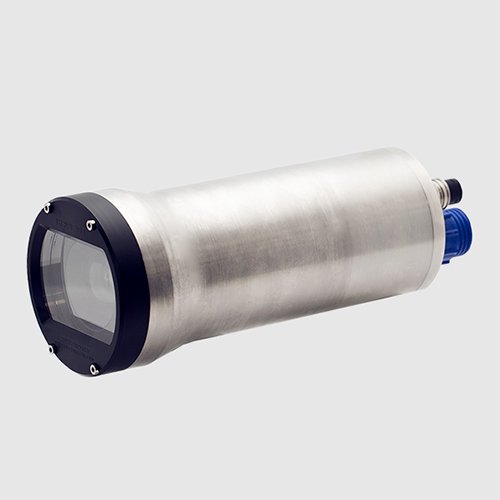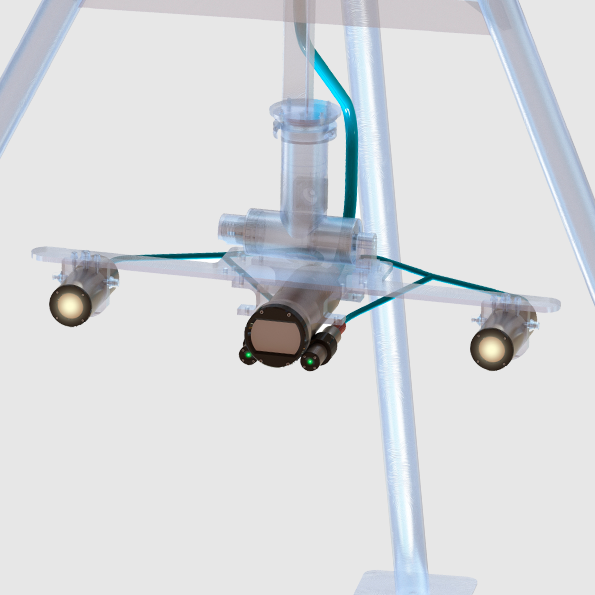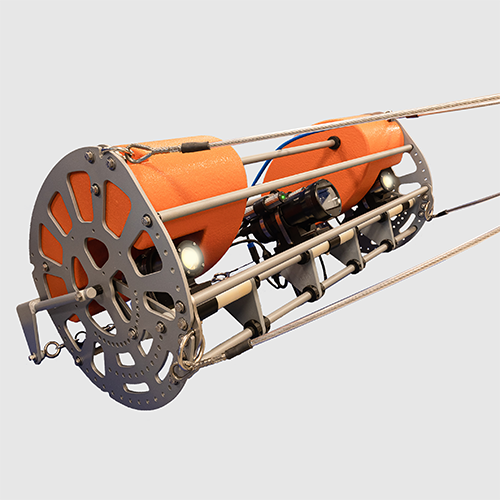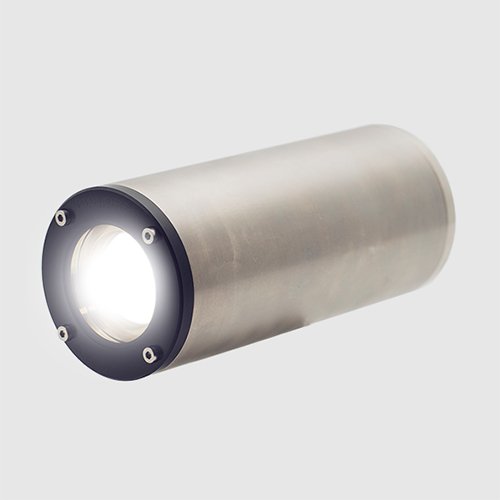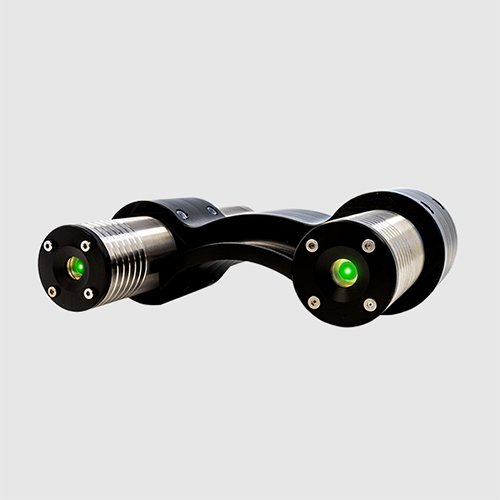The Power of Subsea Imaging: Helping Scientists Tackle Critical Marine Conservation Issues
Photo credit: NOAA
Marine conservation stands as one of the most pressing challenges of our time. As our oceans face unprecedented threats from human activities and climate change, the need for effective tools and technologies to study, understand, and protect marine ecosystems has become more crucial than ever before. Among these tools, subsea imaging has emerged as a game-changer that enables and supports scientists and researchers. In this article, we will explore the significance of subsea imaging in marine conservation, its pivotal role in addressing critical marine issues, and how cutting-edge technology is used by scientists to study marine ecosystems, monitor biodiversity, and mitigate human impacts on the marine environment.
Why Is Marine Conservation A Global Critical Issue?
Marine conservation has transcended regional boundaries to become a pressing global issue due to its far-reaching implications for the environment, economies, and humanity as a whole. Oceans, comprising over 70% of Earth's surface, are crucial for biodiversity and ecosystem services that sustain life. With millions of species yet to be discovered, these ecosystems provide essential resources, regulate climate, and support coastal communities.
Photo credit: NOAA
The urgency of marine conservation is underscored by its pivotal role in food security. Over a billion people rely on seafood as a primary protein source, making sustainable fisheries vital for both nourishment and livelihoods. Furthermore, oceans play an indispensable role in climate regulation by absorbing heat and carbon dioxide, but increasing acidity threatens marine life. Economic sectors, from tourism to shipping, are intertwined with healthy marine ecosystems, emphasizing the need to balance development with preservation.
Plastic pollution, biodiversity loss, and the transboundary nature of marine impacts accentuate the global significance of marine conservation. In essence, safeguarding oceans is synonymous with safeguarding our planet's well-being, necessitating international cooperation, sustainable practices, and a concerted effort to address the multifaceted challenges imperiling our oceans.
What is the Role of Subsea Imaging in Marine Conservation?
Subsea imaging is a powerful tool used by scientists and researchers to study marine ecosystems, monitor biodiversity, and mitigate human impacts on the marine environment in a variety of ways. Here are some key insights into how this technology is applied in these critical areas of marine conservation:
Studying Marine Ecosystems
One of the core pillars of marine conservation is understanding the complex ecosystems that thrive beneath the ocean's surface. Subsea imaging technology allows scientists to observe marine life and their habitats in their natural environment, providing invaluable insights into the behavior, interactions, and dynamics of various species. From coral reefs teeming with biodiversity to deep-sea trenches hosting enigmatic creatures, subsea cameras enable researchers to document and analyze these ecosystems without disturbing their delicate balance.
Habitat Characterization
Subsea imaging allows scientists to visually characterize different marine habitats, including coral reefs, kelp forests, seagrass beds, and hydrothermal vents. By capturing high-resolution images and videos, researchers can document the physical characteristics and biological communities within these ecosystems.
Behavioral Observations
Subsea cameras are used to observe the behavior of marine species in their natural environment. Researchers can gain insights into feeding habits, reproductive behavior, territoriality, and interactions between species, contributing to a deeper understanding of marine ecology.
Mapping and Surveying
Subsea imaging technology, often integrated with mapping tools like sonar, helps create detailed maps of the seafloor and the distribution of marine species. This data is vital for assessing the health and extent of different ecosystems.
Monitoring Biodiversity
Biodiversity loss is a critical concern in marine conservation efforts. Subsea imaging plays a pivotal role in monitoring biodiversity by allowing scientists to conduct non-invasive surveys of marine species. By capturing images and videos of underwater life, researchers can track population trends, identify endangered species, and assess the health of marine communities. This data is essential for making informed decisions and implementing conservation strategies that protect marine biodiversity.
Species Identification
Subsea imaging aids in species identification and population assessments. Researchers can visually document and catalog the various species encountered during dives, enabling them to track changes in biodiversity over time.
Quantifying Abundance
Baited Autonomous Camera Systems are used to quantitatively assess the abundance and distribution of marine life. These systems attract fish and other organisms to the camera's field of view, allowing for standardized surveys.
Studying Rare or Elusive Species
Subsea cameras are invaluable for studying rare, elusive, or deep-sea species that are difficult to observe through traditional methods. Researchers can capture rare sightings and collect crucial data on these less-understood organisms.
Mitigating Human Impacts
Human activities, including overfishing, pollution, and habitat destruction, pose significant threats to marine ecosystems. Subsea imaging aids in documenting these impacts, providing visual evidence that drives awareness and policy changes. Additionally, subsea cameras are utilized for monitoring artificial reefs, marine protected areas, and restoration projects, enabling researchers to gauge the effectiveness of these interventions in rehabilitating damaged marine environments.
Documenting Human Activities
Subsea imaging provides visual evidence of human impacts on the marine environment, including pollution, habitat destruction, and overfishing. These images can be used in advocacy efforts to raise awareness and promote conservation action.
Assessing Marine Protected Areas
Subsea cameras are employed to monitor the effectiveness of marine protected areas (MPAs) and no-take zones. By documenting changes in marine life within these areas, scientists can assess whether conservation measures are achieving their intended goals.
Evaluating Restoration Efforts
Subsea imaging helps assess the success of habitat restoration and conservation projects. Researchers can track the recovery of damaged ecosystems and the return of marine life to restored areas.
Supporting Sustainable Fisheries
Subsea cameras are utilized to observe fishing practices and assess their sustainability. This data can inform fisheries management strategies, helping to prevent overfishing and minimize bycatch.
What Subsea Imaging Technologies are Used for Marine Conservation?
Subsea Cameras
High-quality subsea cameras are the foundation of subsea imaging. These cameras are housed in specially designed casings that are pressure-sealed to protect the equipment from water damage. They come in various types, including digital still cameras and video cameras, and are essential for capturing images and videos of marine life, habitats, and underwater features. Most cameras come with high-definition and 4K resolution options, built-in storage options, depth, tilt and roll sensors, along with the ability to store NMEA sensor data.
Different subsea cameras are built to withstand different depths. For example, SubC Imaging’s Rayfin Benthic is a subsea camera system tailored for benthic (seafloor) research. It it depth-rated to 6000m and is ideal for capturing high-resolution images and videos of seafloor habitats, marine life, and geological features. On the other hand, the Rayfin Coastal is designed for nearshore and coastal research, making it well-suited for studying marine ecosystems in shallow waters (up to 500m). It offers exceptional image quality and versatility, making it suitable for a wide range of applications, including coral reef monitoring, biodiversity assessments, and habitat characterization in coastal environments.
Autonomous Camera Systems
These are advanced programable camera systems that can be set up to capture images or videos at specific intervals or in response to certain triggers, such as the detection of marine life or changes in environmental conditions. These systems are often used in long-term monitoring efforts. For example, they can be deployed on the seafloor or attached to underwater structures to capture time-lapse imagery of coral growth, fish behavior, or other ecological changes over extended periods. Autonomous programmable camera systems are essential for gaining insights into the dynamics of marine ecosystems and the effects of climate change. Learn more about SubC’s Autonomous Camera System.
Observatory Camera Systems
Observatory Camera Systems are integrated into underwater observatories or research platforms, such as seafloor observatories or buoys. These systems provide continuous, real-time monitoring of underwater environments. They capture live video feeds and data from various depths and angles, offering valuable insights into ongoing events and long-term trends. Observatory camera systems are crucial for understanding the dynamic nature of marine ecosystems, including the behavior of marine species and the impact of natural and human-induced disturbances. For example, a SubC Imaging camera helped reveal the first results from the Holyrood Subsea Observatory.
Tow or Drop Camera Systems
Tow or drop cameras are versatile subsea imaging tools used for marine conservation and research. These systems consist of a camera and imaging equipment attached to a cable or towed behind a vessel. They are designed to capture images and videos of the seafloor and marine life as the camera is towed or dropped into the water. Tow or drop cameras are particularly valuable for surveying large areas of the ocean quickly and efficiently.
These systems are often employed in various marine conservation applications, such as habitat mapping, biodiversity assessment, and environmental monitoring. They are used to document the seafloor's topography, track the distribution of marine species, and assess the impact of human activities, such as trawling or fishing, on the seafloor and its ecosystems.
Their ability to cover substantial areas of the ocean while providing visual data makes tow or drop cameras an essential component of marine research, enabling scientists to gather valuable information about the underwater world and contributing to the preservation and protection of marine ecosystems. Learn more about SubC’s Tow Camera System.
Subsea Lights
Subsea LEDs are commonly used in subsea imaging systems as a source of artificial light. Underwater environments can be dark and challenging for traditional cameras to capture clear images. LEDs provide controlled illumination and are used to enhance visibility for subsea cameras. They are often integrated into ROVs, AUVs, and underwater camera housings to ensure well-lit and high-quality imagery, even in the depths of the ocean. In addition to white subsea lights, red and blue LEDs have specific advantages when it comes to marine science, fisheries, and other oceangraphic uses for marine conservation.
Subsea Lasers
Subsea laser technology is employed in subsea imaging for various purposes. Laser-based systems can measure the distance between the camera and underwater objects or features with high precision, allowing for accurate mapping of the seafloor or the size of marine organisms. Laser-induced fluorescence can also be used to study certain properties of marine life, such as identifying specific pigments in corals or algae. Lasers are valuable tools for scientific research in marine conservation, aiding in data collection and analysis.
Conclusion
In the face of escalating marine conservation challenges, subsea imaging technology has emerged as a transformative force in understanding and protecting our oceans. These specialized cameras, like SubC Imaging's Rayfin Benthic and Rayfin Coastal models, enable scientists to explore the depths of marine ecosystems, document biodiversity, and monitor the impacts of human activities. From revealing the intricacies of coral reefs to tracking elusive deep-sea species, subsea cameras have become indispensable tools. They provide visual evidence of pollution, habitat degradation, and overfishing, driving awareness and change. As we navigate the global imperative of marine conservation, subsea imaging technology illuminates a path towards safeguarding our oceans and their invaluable ecosystems for future generations.













